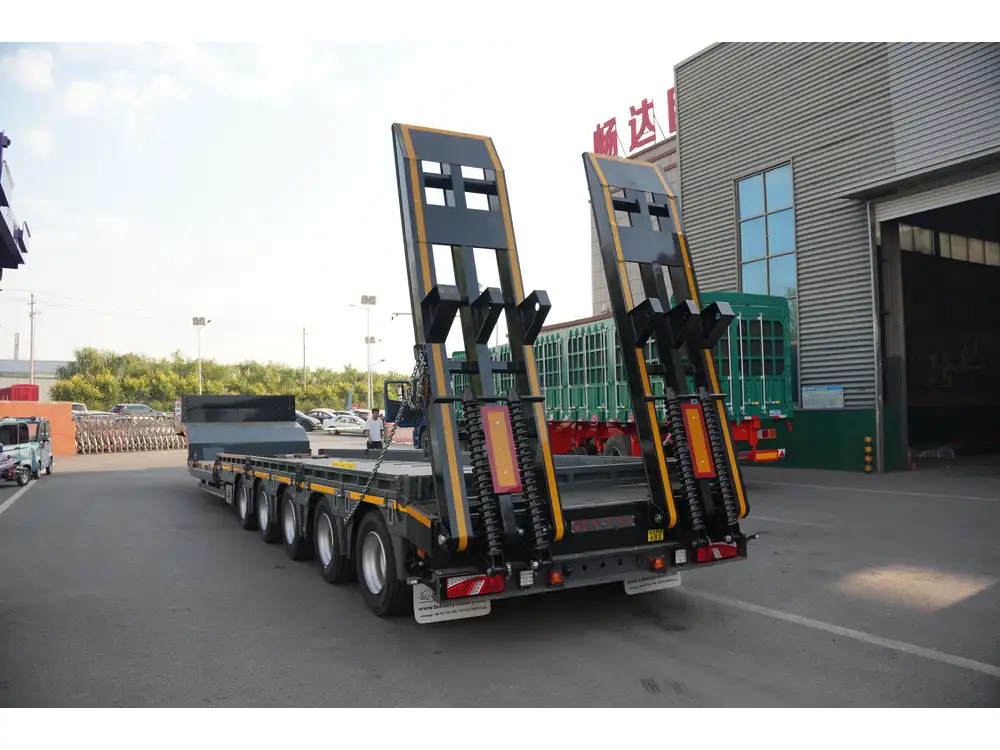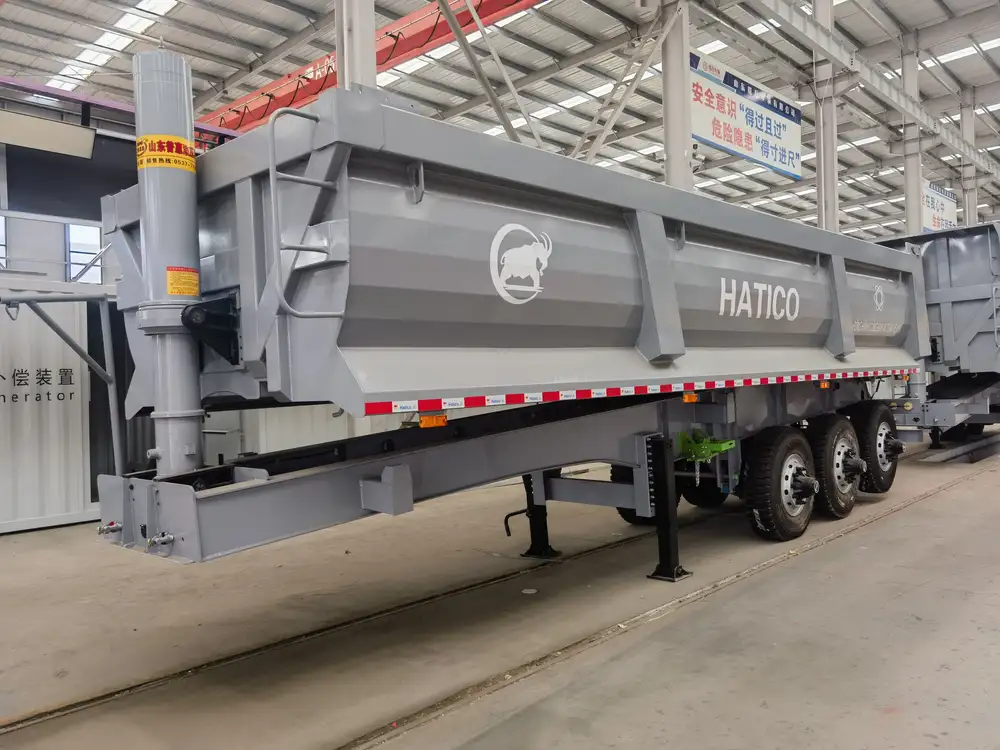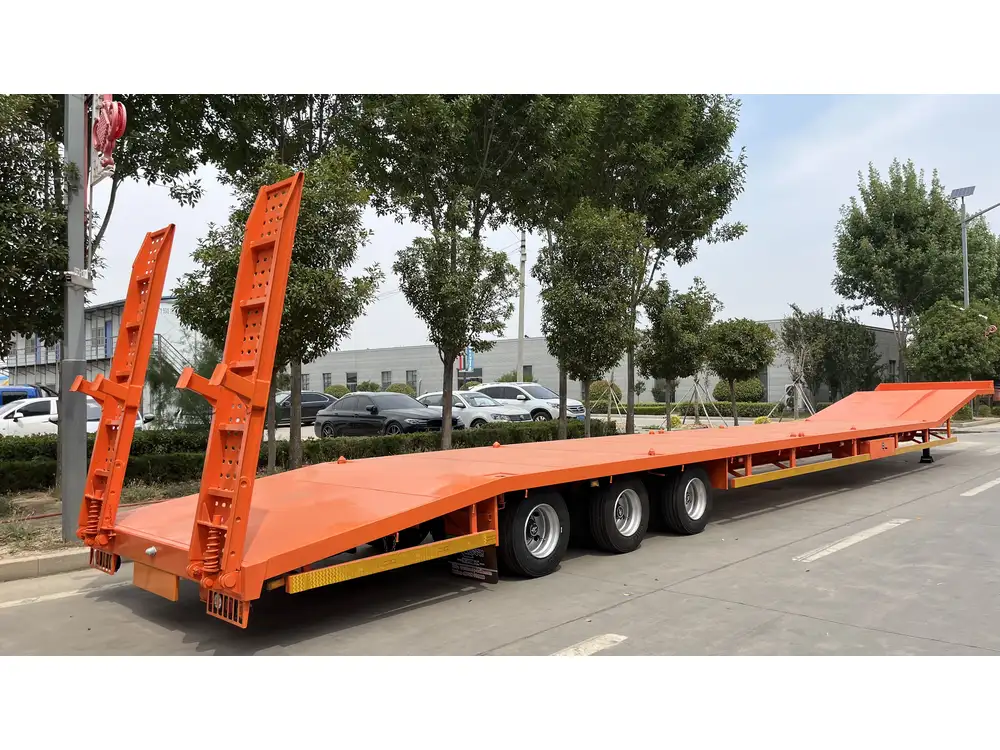Introduction
The semi-trailer, a quintessential vehicle in the logistics and transportation industry, has revolutionized the way goods are moved across vast distances. Understanding its inception not only unveils the evolution of transportation but also underscores the innovative spirit that drives technological advancement. In this article, we delve into the origins of the semi-trailer, tracing its development through the ages while illuminating the key figures and milestones that contributed to its creation.
The Early Beginnings of Trailers
Before delving into the specifics of the semi-trailer, it is crucial to contextualize the evolution of trailers in general:
Horse-Drawn Carriages: The concept of trailers can be traced back to horse-drawn carriages that were utilized for transporting goods in ancient civilizations. Early designs were rudimentary, consisting of simple wooden carts attached to horses.
Motorized Trailers: With the advent of the automobile in the late 19th century, the design of trailers began to evolve rapidly. Increased road network expansion and motorization allowed for larger payload capacities and more intricate designs.

Who Invented the Semi-Trailer?
The Pioneering Innovations by E.J. Decker
The semi-trailer as we recognize it today emerged from the ingenuity of various inventors throughout the late 19th and early 20th centuries. One figure stands out: Elmer J. Decker, who is often credited with inventing the semi-trailer in its modern form in 1914.
Key Contributions:
Design Characteristics: Decker’s notable innovation was the concept of a trailer that could support a portion of its weight on a complementing tractor unit. This distribution of weight allowed for better maneuverability and stability compared to traditional trailers.
Structural Reinforcement: Decker’s designs featured advancements in materials, using steel for the frame, which significantly increased strength and durability.
Commercial Use: Decker’s semi-trailer designs caught the attention of commercial interests, setting the groundwork for what would become the standard in freight transportation.
The Role of the Freight Transportation Industry
As we reflect on the history of the semi-trailer, it is essential to acknowledge the broader context in which it developed — the freight transportation industry:
World War I: The demand for efficient transportation of military supplies propelled innovations in vehicle design, further emphasizing the importance of adaptability in transport options.
Rise of Interstate Commerce: The expansion of the U.S. interstate system during the 1950s created an urgent need for efficient cargo transport solutions, solidifying the semi-trailer’s role in commerce.

Key Advancements in Semi-Trailer Design
While Decker’s invention laid the groundwork for the semi-trailer, subsequent years saw significant advancements:
1. Innovations in Suspension Systems
The introduction of air suspension systems revolutionized the way semi-trailers handled weight distribution. These systems improved stability and provided a smoother ride for both the cargo and the vehicle itself.
- Benefits: Enhanced cargo protection, tire longevity, and overall vehicle efficiency.
2. Materials and Construction Techniques
Over the decades, materials used in semi-trailer construction evolved significantly:
| Material | Properties | Applications |
|---|---|---|
| Steel | High tensile strength, durability | Framework and chassis |
| Aluminum | Lightweight, resistant to corrosion | Bodies and frame components |
| Composite Materials | Combination of strength and weight | Specialized trailers for specific cargo types |
These innovations led to trailers that are not only lighter but also more resilient to the rigors of the road.

3. Regulatory Developments
With the growth of the transportation industry came the necessity for regulatory frameworks to ensure safety and efficiency:
Federal Regulations: Legislation in the United States, particularly through the Federal Motor Carrier Safety Administration (FMCSA), established weight limits and safety standards, influencing how semi-trailers were designed and utilized.
International Standards: Various international regulations jogged the evolution of semi-trailer designs to adhere to global shipping standards.
The Economic Impact of Semi-Trailers
Transforming Supply Chains
The semi-trailer has been instrumental in shaping modern supply chains:
Reduced Cost of Transportation: By maximizing cargo capacity and efficiency, semi-trailers have significantly lowered transportation costs for goods.
Facilitating Global Trade: The capacity to transport larger volumes and diverse types of cargo has enhanced global trade networks, contributing to economic growth.

Job Creation and the Transportation Economy
The rise of the semi-trailer industry has led to a profound impact on job creation:
Employment Opportunities: From truck drivers to logistics managers, a wide array of jobs has emerged as a direct result of the semi-trailer’s integration into the economy.
Support Industries: Beyond driving, sectors such as maintenance, manufacturing, and trucking logistics have flourished alongside the semi-trailer industry.
Environmental Considerations
As with any technological advancement, there are environmental implications to consider regarding semi-trailers:
1. Fuel Efficiency Innovations
As fuel prices fluctuate and environmental concerns mount, the transport industry has focused on enhancing semi-trailer fuel efficiency:
Aerodynamic Designs: Innovations such as fairings and side skirts have been introduced to reduce drag and enhance fuel efficiency.
Weight Reduction: The use of lighter materials has allowed for more efficient fuel use per cargo load.

2. Transitioning to Sustainable Practices
The semi-trailer industry is gradually moving towards more sustainable practices, reflected through:
Investments in Electric Trucks: The future may see a significant shift toward electric semi-trucks, reducing reliance on fossil fuels.
Adopting Best Practices: Companies are increasingly focusing on reducing emissions and minimizing their ecological footprint through optimized routing and maintenance programs.
Future Directions in Semi-Trailer Development
Emerging Technologies in Trailers
Looking ahead, various technologies promise to shape the future of semi-trailer design and functionality:
Autonomous Technology: The potential for self-driving semi-trucks could revolutionize the freight industry. Companies are aggressively investing in autonomous driving systems designed for transportation efficiency and safety.
Telematics and Connectivity: Improved communication systems within trailers facilitate real-time tracking and condition monitoring, enabling better freight management and efficiency.

Conclusion
The invention and evolution of the semi-trailer is a story interwoven with innovation, economic transformation, and global connectivity. By understanding the colorful history and examining future prospects, we can appreciate the pivotal role that semi-trailers play in the fabric of modern logistics. Keeping abreast of legislative changes, technological advancements, and environmental challenges will be vital as we continue to navigate the complexities of the transportation industry.
As we embrace the future, it remains crucial to recognize the past. The semi-trailer, borne from necessity and ingenuity, stands as a testament to the relentless pursuit of efficiency that characterizes human endeavor.



